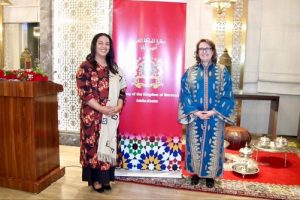
African arts are not simply an art works; they are means of expressing ones ideas with artifacts, paintings, architecture and whatnot.
African art is also a dynamic one and has changed in form, function, and meaning over time and from place to place. The art works have also been diversified in their function, type, social value and norms. For instance, pre-colonial African arts were purely meant for the sake of the community and for ritual purposes throughout the continent. Even traditional religions, for the most part, developed at a local level and are unique to a particular society. The common elements across religions include a belief in a creator god, who is rarely represented in art and directly approached by worshipers (Clarke, 2006).
Post-colonial Africa’s style of art adapted the western style. To one’s dismay, some styles were intentionally destroyed just to glorify the Western art and culture. Another cause that added to a shift in style of African arts is the appreciation of African art in the Western world. This has had an enormous impact not only on the development of modern art in Europe and the United States but also on the way African art is presented in a Western museum settings.
Clarke in his work, Religion and the Spiritual Realm, Metropolitan Museum of Art, wrote that objects from Africa were brought to Europe as early as the fifteenth century; however, it was during the colonial period that a greater awareness of African art had developed. The conceptual, abstracted figures and masks were not considered as an art work. The European experience as far as the meaning of arts was mostly depended on painting and sculptures than performance art.
But the impact of Colonialism on Contemporary African Art stands out in the discussion of the dynamics of African art, the writer believes.
Europeans saw opportunity for economic, political, and social expansion and embarked on a project-the “scramble and partition” of Africa in 1884-85. The British, French, and Portuguese were three of the major European countries that saw Africa as prime real estate. And colonialism destructed African culture, history and identity.
Pre-colonial African arts were highly related with the daily life activity and performances. During the ages of colonization, the African art materials, subject matters, purposes and values are destroyed and substituted by European principles and subject areas, Clemens argue in his book entitled: Impact of Colonialism on Contemporary African Art, Africana Studies Student Research Conference.
In Eighteenth-century Europe, philosophers and critics constructed a definition of “Art” in which the object was unique, complex, irreplaceable, inspired by the natural world. In contrast, non-Western art was viewed as not unique, simply produced, replaceable, and utilitarian.
Therefore, Non-Western art was not considered to be art for long periods, highlights Klemm in a piece of writing entitled: The Reception of African Art in the West, The Metropolitan Museum of Art. The western world justified art as a ‘European legal property’ not for other countries. This isolation of African arts from the western “category” or “meaning” lasted up to the end of 18th century.
According to Mudimbe, African arts until the eighteenth century named as ” strange”, ‘primitive’ and “ugly” artifacts, they really enter into the frame of African art after 18th century. The European anthropologists and art historians gave a name for African artifacts as hasty generalization to claim the existence of African art without adequate validation.
The main objective of African artists in creating abstraction is not a matter of lack of skill for a realistic figure or absence of awareness to the nature, but it is a decision to create abstract representations with consciousness on a certain issues. For example in the art of life, present-day Nigeria did abstract figures and also realistic compositions. When the western viewers observe these abstract figures, they have admired the art works so much; the pictures are powerful in religious, political and cultural issues symbolically .
Masks in African art are one of the best decisive arts that have different designs and well decorated art works. Purposely the African art works are meant to serve social, religious and political functions.
Masks in African culture are very fundamental for ritual purposes, to create deep emotion when dancing. Almost all African ritual ceremonies are celebrated by wearing these decorated masks to create a hot vive with spectators. During ceremonies, decorative elements, such as beads, metal jewelry, and fabric, can be added to a work, many of these masks are worn by men.
The Spanish artist Pablo Picasso, inspired by African masks, created a new modern art style called cubism. Picasso’s Self Portrait, once again from the miraculous year 1906, gives the artist himself the head of a mask as well. “Picasso painted his own face as if it were a mask” writes Marie-Laure Bernadac and Paule du Bouchet, adding: “almost as if it belonged to someone other than himself. The intensity, the almost savage archaism of this self-portrait shows the progression Picasso had made over the course of several years, even over the previous few months.”
But others believe that celebrating the entrance of savage sculptures into the museum from which they had been kept away, in this regard, he says: “This crucial and ageless art, so strangely relevant to our own, is the art of our next investigation: the night side of man.” But Picasso’s view was important about African masks. The current generations (European modern society) are using the African sculpture as an inspiration for different creativities like movies, animations and games.
Ethiopian art
Ethiopian art focuses on painting, architecture, sculpture, engravings and to a degree, textiles, produced within the Ethiopian region during the long period from the rock art of the medieval period up to contemporary art.
The Aksumite kingdom flourished from the first century BCE until the 7th century CE, and was Christianized in the 4th century. Related to Christianity, religious paintings flourished on the church walls and buildings. From all works of Ethiopian arts, traditional paintings are dominant as compared with sculpture and engravings, even though the Konso’s Waka sculpture and Tiya stone engravings are available. Early from Aksum period up to Gonderian period, the Ethiopian traditional paintings showed remarkable development both quantitatively and qualitatively all over the Christian kingdoms and territories.
The sources of Ethiopian traditional (indigenous) paintings are the Orthodox Church principles of painting. But it doesn’t mean that all traditional Ethiopian paintings are religious. There are secular paintings based on cultural perspective.
In view of this idea, the western scholars tried to justify the Ethiopian art as religious art; they even do not consider the arts as an African. The Ethiopian paintings have unique features and styles as compared with other African arts indeed.
In the Ethiopian history of art, paintings are more common than sculpture and masks. As the Ethiopian art historian Abebaw Ayalew says, Ethiopian paintings have their philosophical aspects—focusing on the message than the quality of the art work (Abebaw, 1996). Western Scholars, in their attempt to reject these art works correlated the paintings with Byzantine art or Coptic Egypt Christian arts.
Though the Ethiopian art is influenced by styles from other countries, art works of the 17th and 19th centuries has maintained its integrity in symbolization and illustration of pictures. Some scholars tried to portray African arts is exclusively masks and sculptures. But the African arts are so diverse.
To conclude, African arts have unique characteristics and inspirations for European modern art history even though European art history refuses to admit this. The originality of African arts is not preserved indeed. It has experienced damages due to colonialism. And many of the crafts and sculptures had been transported to Europe. Africans had practiced conceptual art long before it was seemingly reinvented in Western art in the twentieth century.
The art was not originally named “conceptual art” by its African originators. To the African, the art was a lived experience and manifested in their everyday life activity. It took both performative and visual form. Found object and varied junk materials used to keep an artistic idea alive were censured in the eyes of the many Western observers though this generic art of Africa showed sensitivity towards the environment.
So the European idea of modern art and conceptual art roots emerged from Africa. European modern artists; like Marcel Duchamp and Pablo Picasso’s inspiration was the concept of African arts and performances. Unlike the European idea of African art, it is related to daily life and worship.
The Ethiopian Herald Friday 28 February 2020
BY MIHIRETU WASSIE




